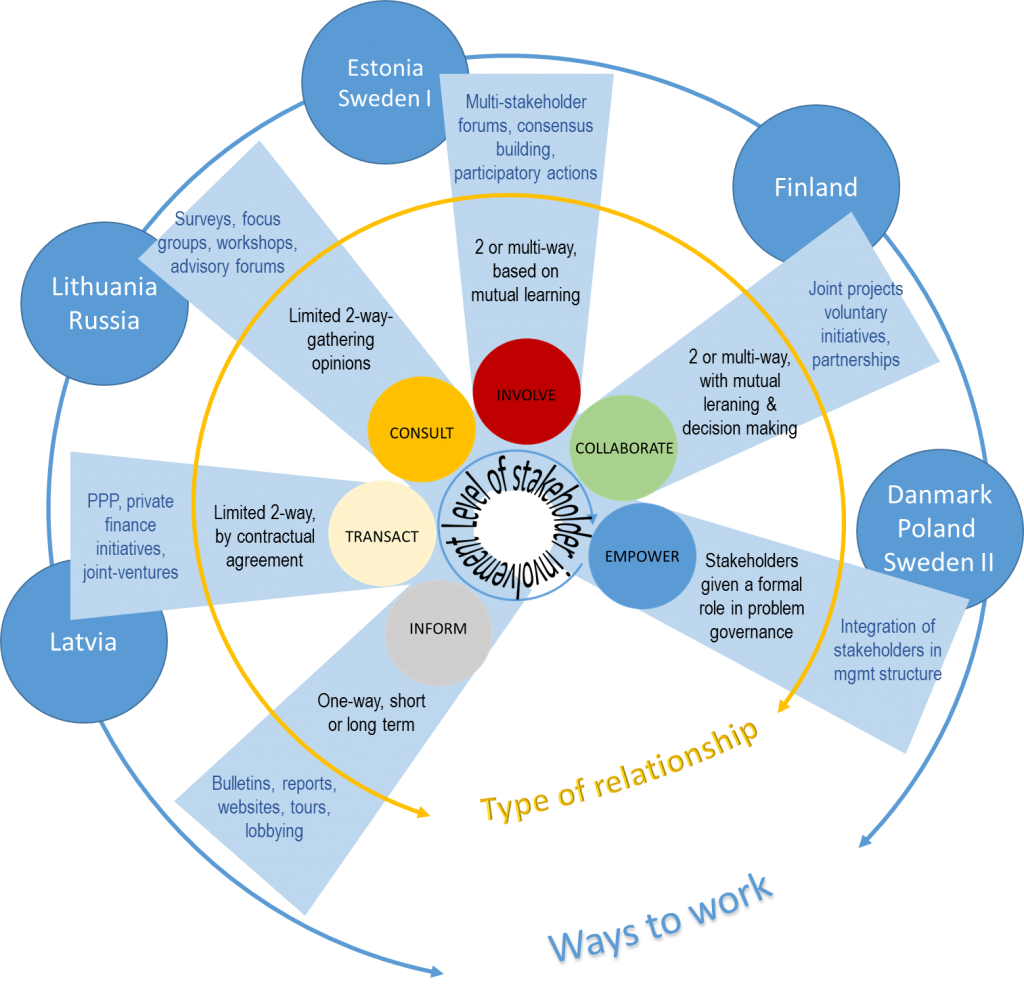Assessment of levels of stakeholder engagement in case area activities
Assessment of levels of stakeholder engagement in case area activities
Kinga Krauze, ERCE Poland
There are several levels of stakeholder engagement in solving environmental problems: informing, transaction, consultation, involvement, collaboration and empowering (AccountAbility 2005). They reflect the level of problem recognition, understanding, defining, agreement on taking an action, consensus building and implementation. Thus, the type of relationship developed in particular location (Waterdrive case area) can reach different levels for different issues, e.g. empowering for biodiversity protection and informing for drought adaptation strategy. The Waterdrive’s case areas deal with water quality and quantity issue. All of them run an information action based on printed materials and media, trying to raise awareness among variety of stakeholders. The Latvia site being at the level of understanding the problem, initiated a broad scale data gathering action and capacity building in terms of expertise, but also environmental impact assessment. Launching of private-public partnership for sustaining the research and monitoring served as a helpful mechanism. This required two-way communication based on contractual agreements, thus setting transaction rules. The progress indicators are data series and data bases. The next step is better defining the problem, e.g. the drivers of presses and pulses affecting the state of environment. This is usually achieved by working with dedicated stakeholder groups or broader scale surveys, thus reflects consultation level of stakeholder engagement. Lithuanian and Russian partners of Waterdrive initiated such activities in their case areas. The measure of success is several stakeholders mobilized towards defining the problem and deciding for action. This level of engagement – involvement – requires multi-stakeholder forums for discussion of scenarios, and costs and benefits for different actors, like in Estonian and Swedish situation. Considering the complexity of water-related environmental challenges, only consensus over gains and loses triggers further actions, which often take the form of joint projects addressing particular issues important for communities. This is a level of collaboration which enables for and builds from mutual learning and mutual decision making. Collaboration is a long-term relationship, where progress can be measured as a number of joint projects, presence of common vision and strategy. This level of engagement represents Finnish case area. Only very trustful relationship allows for giving stakeholders a formal role in problem solving, through their integration in the management structures, hence empowering. Usually it marks the implementation part of problem solving, which involves not only individual and focused projects, but often policy development or adjustment, planning, long-term commitment of at least some actors. In Waterdrive those are Polish, Swedish and Danish sites which took such an approach.



